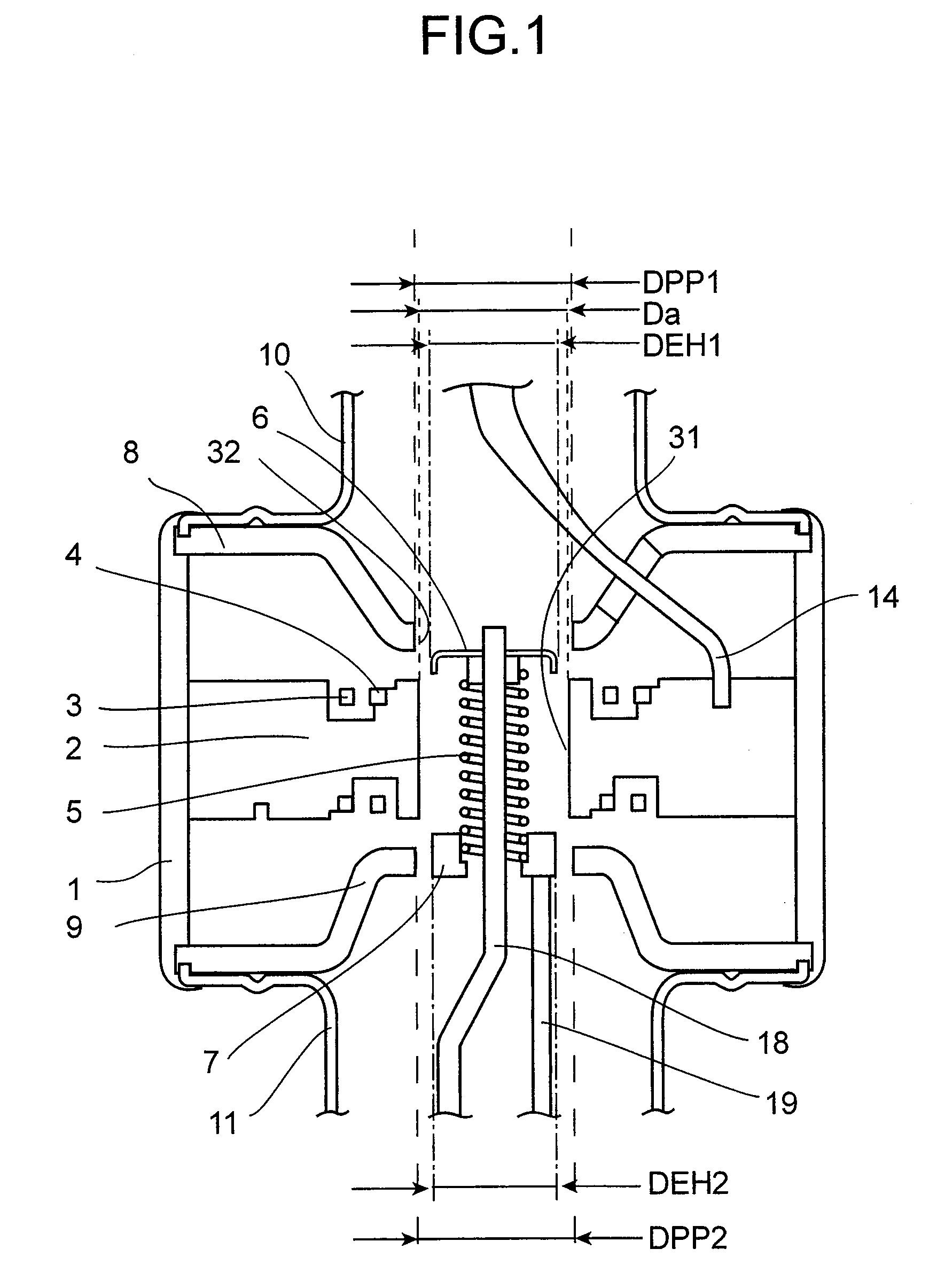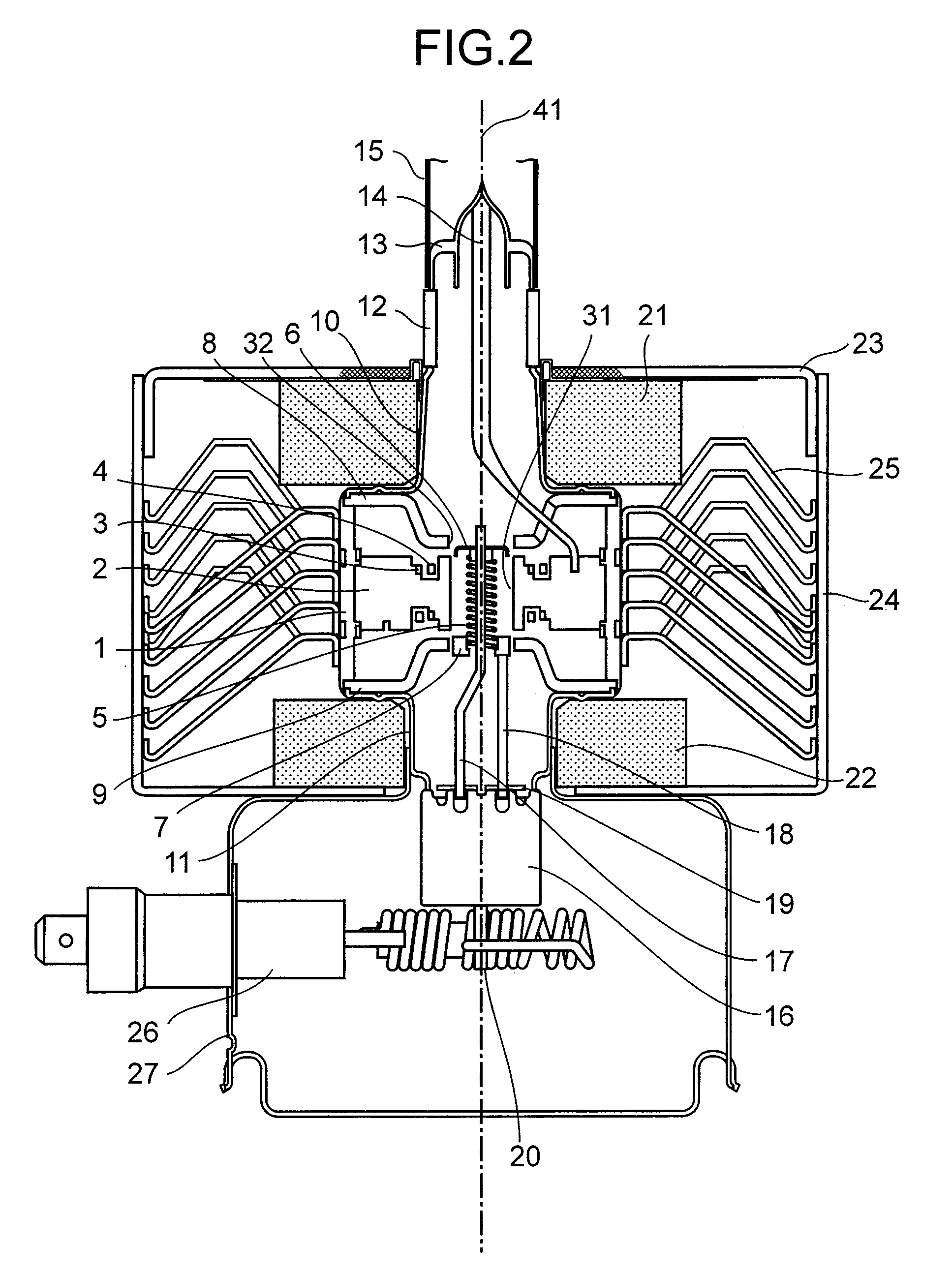Magnetron For Microwave Oven
a microwave oven and magneton technology, applied in the direction of magnetrons, transit tubes/containers, electric discharge tubes, etc., can solve the problems of cathode back heat by electrons, deterioration of load stability, and degradation of various characteristics of magnetrons
- Summary
- Abstract
- Description
- Claims
- Application Information
AI Technical Summary
Benefits of technology
Problems solved by technology
Method used
Image
Examples
Embodiment Construction
[0015]Hereinafter, embodiments of a magnetron for microwave oven according to the present invention will be described with reference to the drawings. The same symbols are given to same or similar configurations, and duplicated descriptions may be omitted.
[0016]FIG. 2 is a cross sectional view of the magnetron for microwave oven according to an embodiment of the present invention.
[0017]The magnetron for microwave oven of this embodiment has an anode cylinder 1, a cathode 5, a pair of end hats 6, 7, a pair of pole pieces 8, 9, which are located along the same axis (the central axis 41), and a plurality of vanes 2 extending radially from the proximity of the central axis 41.
[0018]The anode cylinder 1 extends cylindrically along the central axis 41. The vanes 2 extend radially from the proximity of the central axis 41, and fixed to the inner surface of the anode cylinder 1. Each of the vanes 2 is formed substantially as a rectangular plate. The free ends 31 of the vanes 2, which are not...
PUM
 Login to View More
Login to View More Abstract
Description
Claims
Application Information
 Login to View More
Login to View More - R&D
- Intellectual Property
- Life Sciences
- Materials
- Tech Scout
- Unparalleled Data Quality
- Higher Quality Content
- 60% Fewer Hallucinations
Browse by: Latest US Patents, China's latest patents, Technical Efficacy Thesaurus, Application Domain, Technology Topic, Popular Technical Reports.
© 2025 PatSnap. All rights reserved.Legal|Privacy policy|Modern Slavery Act Transparency Statement|Sitemap|About US| Contact US: help@patsnap.com



